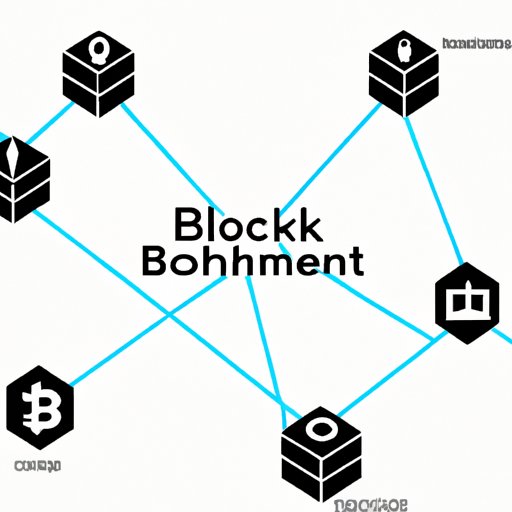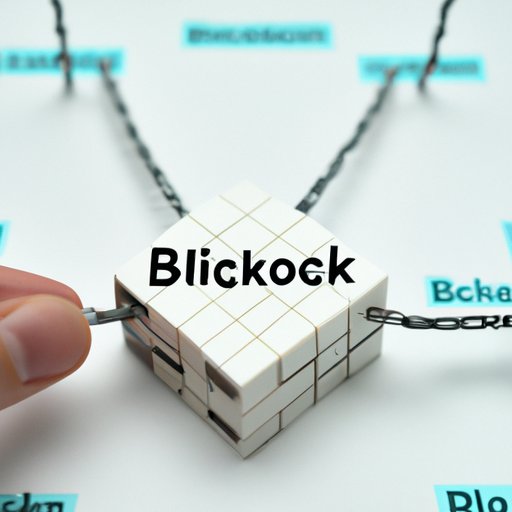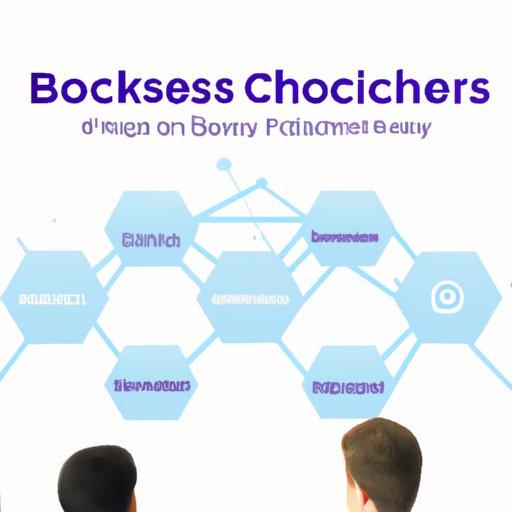Introduction
Blockchain is a revolutionary technology that has been gaining traction in recent years. At its core, it is a distributed ledger technology (DLT) that can be used to store and process data in a secure, transparent, and immutable manner. This article will explore what blockchain is, the benefits it offers, how it works, and some potential use cases for the technology.

Exploring the Benefits of Blockchain
As with any new technology, it is important to understand the benefits offered by blockchain. The most notable benefit of this technology is increased security. Through its distributed ledger system, users can trust that their data is safe and secure from malicious actors. Additionally, since blockchain networks are decentralized, there is no single point of failure. This means that if one node fails, the rest of the network remains unaffected.
Another major benefit of blockchain technology is faster and cheaper transactions. Since transactions are verified by a network of computers instead of a single centralized entity, they can be processed much more quickly. Furthermore, since there is no need for intermediaries to facilitate the transactions, there are lower fees associated with them.
Finally, blockchain technology offers data immutability, meaning that data stored on the network cannot be changed or deleted. This helps to ensure that data is accurate and reliable and that it remains unchanged over time.

Examining the Components of a Blockchain
In order to better understand how blockchain works, it is important to examine the components that make up a blockchain network. The first component is nodes. Nodes are computers that are connected to the network and act as validators, verifying transactions and adding them to the blockchain. Each node stores a copy of the entire blockchain and is responsible for keeping the network secure.
The second component is mining. Mining is the process of verifying transactions and creating new blocks on the blockchain. Miners compete to solve complex mathematical puzzles in order to add new blocks to the chain. As an incentive, miners are rewarded with cryptocurrency when they successfully add a block.
The third component is blocks. Blocks are collections of transactions that are added to the blockchain. Each block contains a cryptographic hash of the previous block, a timestamp, and transaction data. Once a block is added to the blockchain, it cannot be changed or removed.
Understanding How Transactions Work on a Blockchain
Now that we have explored the components of a blockchain, let’s look at how transactions work on a blockchain. The first step is identification of participants. In order to send or receive funds, users must have an address associated with their wallet. This address is used to identify the sender and recipient of a transaction.
The next step is verification of the transaction. This is done by miners who use specialized software to verify that the transaction is valid. If the transaction is valid, it is then added to a block and broadcasted to the network.
The final step is recording of the transaction. Once the transaction is verified and added to a block, it is permanently recorded on the blockchain and cannot be changed or reversed. This helps ensure the integrity of the network and prevents double spending.
Investigating Smart Contracts and Decentralized Applications
In addition to understanding how transactions work on a blockchain, it is also important to understand other features of the technology, such as smart contracts and decentralized applications. Smart contracts are computer programs that execute automatically when certain conditions are met. These contracts can be used to automate processes and create trust between parties without the need for intermediaries.
Decentralized applications (DApps) are applications built on top of a blockchain. Unlike traditional apps, DApps are not controlled by a single entity. Instead, they are powered by a peer-to-peer network of computers and are open source, meaning anyone can view or contribute to the code. Some popular examples of DApps include Cryptokitties and Ethereum.
Analyzing the Security Aspects of Blockchain
It is also important to consider the security aspects of blockchain technology. One of the main security features of blockchain is encryption. All data stored on the blockchain is encrypted using advanced cryptography, making it nearly impossible for hackers to access or manipulate the data.
Another key security feature is the use of consensus algorithms. Consensus algorithms are used to validate transactions and ensure that all nodes on the network agree on the current state of the blockchain. This helps prevent double spending and ensures that data is accurate and up-to-date.

Exploring Future Use Cases for Blockchain
Finally, let’s explore some potential future use cases for blockchain technology. One of the most promising use cases is supply chain management. By using blockchain, companies can track the movement of goods from the point of origin to the point of sale, ensuring that products are not lost or stolen along the way.
Another potential use case is healthcare. By leveraging blockchain, healthcare providers can securely store and share patient data while maintaining privacy and accuracy. This could help to improve patient care and reduce medical errors.
Finally, blockchain could revolutionize the financial services industry. By using blockchain, banks and other financial institutions can securely store and transfer funds, eliminating the need for intermediaries and reducing transaction costs.
Conclusion
To conclude, this article has explored how blockchain works and the benefits it offers. We have examined the components of a blockchain, including nodes, mining, and blocks. We have also looked at how transactions work on a blockchain, as well as smart contracts and decentralized applications. Finally, we have discussed the security aspects of blockchain and some potential use cases for the technology.
Overall, blockchain is a powerful technology that has the potential to revolutionize many industries. With its increased security, faster transactions, and data immutability, it is easy to see why so many people are excited about the possibilities of this technology.
(Note: Is this article not meeting your expectations? Do you have knowledge or insights to share? Unlock new opportunities and expand your reach by joining our authors team. Click Registration to join us and share your expertise with our readers.)
